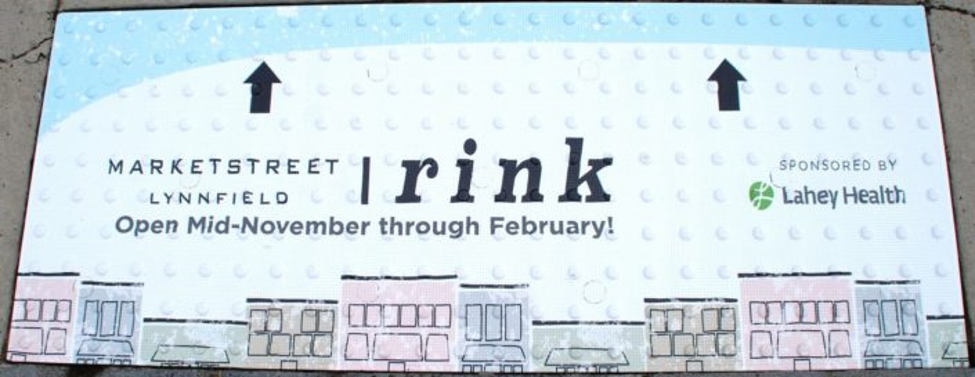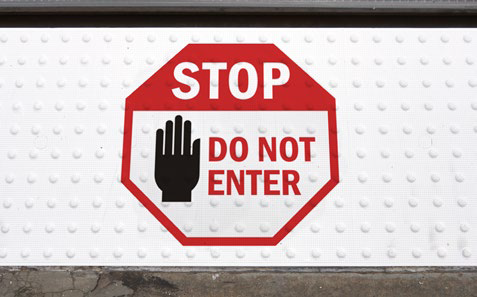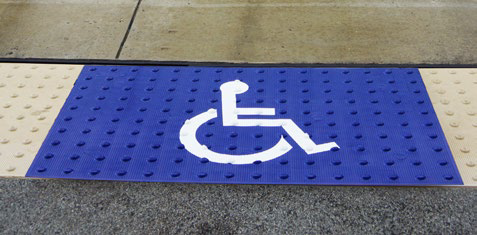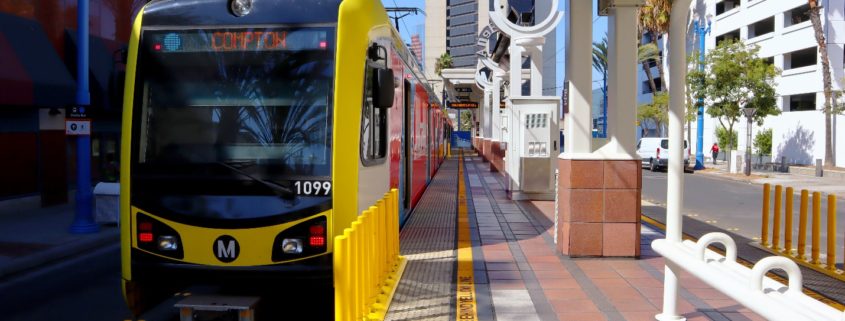7 Uses for Customizable Graphic Tiles
Graphic floor tiles can be a powerful tool for protecting public safety and helping people navigate large spaces or venues. Customizable tiles provide visual information in the form of colorful symbols, images, and written messages. They also feature a bumpy surface that alerts people with visual impairments they’re about to transition between a walkway and a potentially hazardous area (such as a roadway or the edge of a train platform).
Graphic floor tiles have become more and more popular in public spaces. We’ll look at some of their many uses ahead.
The ADA and Accessibility of Public Spaces
We can’t talk about graphic tiles without mentioning the ADA. The Americans with Disabilities Act (ADA) was enacted in 1990 to expand protections for people with disabilities. Title III of the ADA requires “spaces of public accommodation” to be accessible and navigable for people with physical disabilities.
One of the ways towns and cities make public spaces more accessible is by installing detectable warning tiles on the ground to help people with disabilities navigate. These tiles are usually made of plastic, porcelain, cast iron, or steel, and have a bumpy surface (called truncated domes), which are designed to be easily felt through the soles of most shoes, under the wheels of a wheelchair, or by a cane.
The ADA requires detectable floor tiles at all intersections where a sidewalk enters or leaves a motorway and at the edges of boarding platforms for trains and subways.
Graphic tile systems have been modified to incorporate colorful signs and symbols, directions, or instructions. They are helpful for people both with and without disabilities.
Here are some popular locations where graphic tiles can be used to help people navigate.
Public Transportation Stations

Millions of people in the U.S. make their way through train stations, subways, and bus stations every day. It’s imperative to control foot traffic in busy transit stations. Graphic tiles can help point passengers in the right direction, guide them to pay stations, alert them of oncoming trains/buses, and indicate where they should board.
Shopping Malls
Even the average-sized mall in the U.S. is huge. Most have equally large outdoor parking lots or parking structures. Graphic tiles can be used to designate different parking areas or zones, point the way to public transportation stops, and help people navigate outdoor corridors and spaces.
Airports

Airports are busy environments with many potential hazards, especially outside, where cars, buses, and hotel shuttles are constantly circling and moving in and out of drop-off areas. Detectable warning surfaces are essential (and required by the ADA) in these areas to alert people with visual impairments of transitions between walkways and roadways.
Warning tiles with graphics can also serve as a visual aid to those without disabilities. They can be used to point the way to airline desks, restrooms, food courts, and more.
Public and Private Colleges and Universities

Public and private colleges and universities that receive federal funding are required to provide equal access to students with disabilities under Title II and Title III of the ADA. Wayfinding surface tiles are ideal for large college and university campuses. Graphic tiles can also be incorporated to help students without visual impairments find classrooms, libraries, dining areas, and dormitories, and to warn people of bike paths and other hazards.
Government Buildings

Title II of the ADA requires that state and local governments make their facilities accessible to people with disabilities. Yet, many towns and cities still aren’t fully ADA-compliant. One reason for this is a common misconception that older buildings are “grandfathered” in and aren’t subject to ADA requirements, but this simply isn’t true.
Installing detectable warning surfaces and graphic tiles near bike paths and roadways is an easy and relatively cost-effective way to immediately start bringing government properties into compliance with the ADA.
Office Complexes and Campuses

Large multi-building office complexes can be difficult to navigate, especially for visitors. In addition to using detectable warning surfaces in parking areas and street crossings, graphic tiles can help visitors find their way, mark prohibited or restricted areas, and alert people to bike lanes.
Museums, Theaters, and Convention Centers
Graphic tiles are ideal for convention centers, museums, theaters, and other venues with high levels of foot traffic. Use them to help people find ticket booths, navigate through parking lots and structures, and locate buildings.
Graphic Tile Systems by ADA Solutions

ADA Solutions offers fully customizable replaceable graphic tiles with the message, colors, and fonts of your choice, as well as reflective ink options.
The customizable tiles meet or exceed all federal and state accessibility standards. Messages can be painted on a single tile or on several sequential tiles, as needed. Learn more about our graphic tiles and browse our complete product line.




